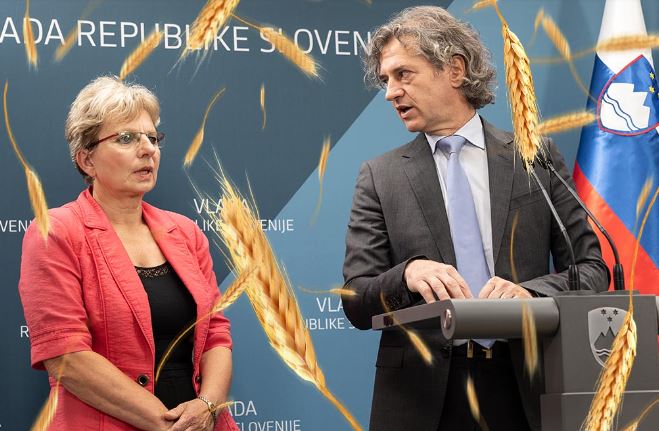Prime Minister Robert Golob and Minister of Agriculture Irena Šinko announced at press conference that the state will buy this year’s entire wheat crop, causing real confusion. The government does not yet have a buyout strategy, and the price is not even known.
The Zadružna zveza Slovenije already announced on Monday that the harvest will mostly be completed by the end of this week. The Chamber of Agriculture and Forestry of Slovenia warned that the state purchase of Slovenian wheat is a big logistical problem.
Yesterday, more farmers came forward and announced that they expect explanations from the state about the purchase of wheat. They expect the government to present to them as soon as possible the starting points for the announced measure to buy Slovenian wheat. They still do not know how the prices will be formed and whether the wheat will be bought by the state or market buyers, and they will then get some kind of supplement.
After all these warnings, Irena Šinko, the minister from Gibanje Svoboda party, who has obviously stepped into shoes that are too big or is simply waiting for the instructions of her boss, Golob, to whom she is deeply submissive, finally moved. Yesterday, she held talks with stakeholders, as announced by the ministry. However, according to explanations from the ministry, they only exchanged information on the state of wheat and “also touched on the procedure that would be carried out on behalf of the state by the Institute of Commodity Reserves of the Republic of Slovenia”. They did not get any further.
The logistics and the price are still a big unknown.
At the same time, the farmers announced that they expect at least 400 euros for a ton of wheat. However, Golob hinted last week that the price could be lower. According to unofficial information, the government is said to be offering 320 euros per ton, which is a quarter less than the farmers’ expectations.
On international markets, the price of wheat is increasing rapidly and is already approaching the price of 500 euros per ton. The data shows that the price for a ton of wheat increased by more than 48 percent from December 2021 to May 2022.
After the problems with oil derivatives, where they caused real chaos, now the same problem is occurring with wheat. It is interesting, however, that this chaos “started” to be noticed even in the so-called left media.
This year, over 28,000 hectares of land are sown with wheat in Slovenia, which is slightly less than in previous years. 140,000 to 150,000 tons of wheat could be grown on these areas, which would cover 80 to 90 percent of domestic needs. However, since we do not use all the wheat for bread, we are 60% self-sufficient. A lot of wheat is also used for feeding the livestock.
Vida Kocjan


